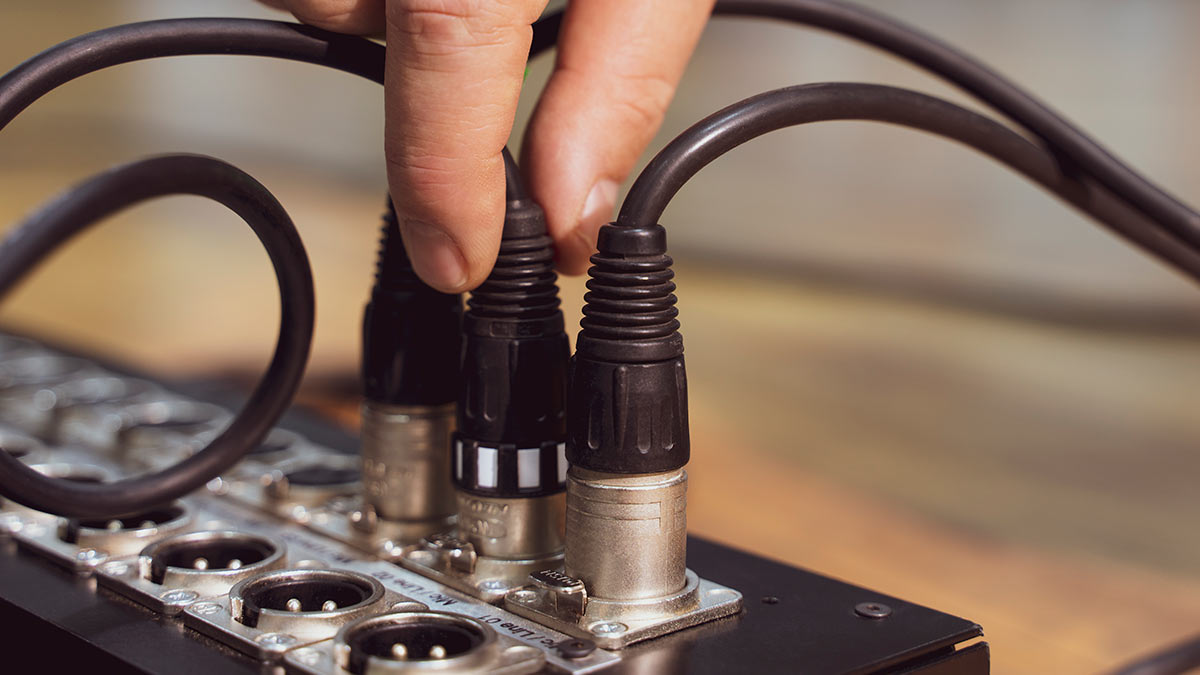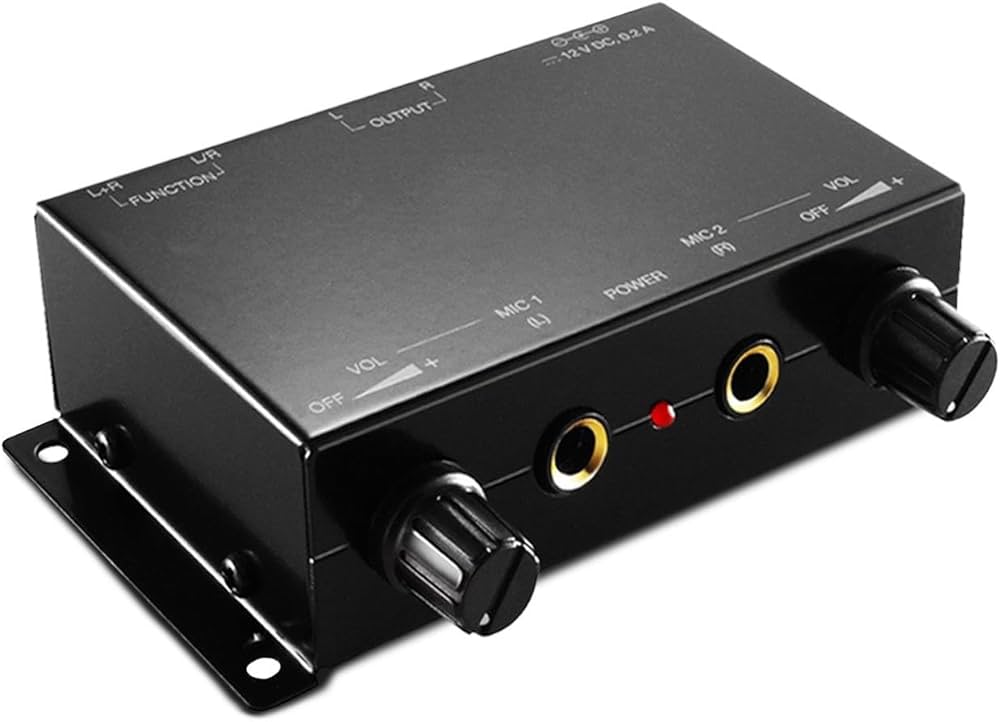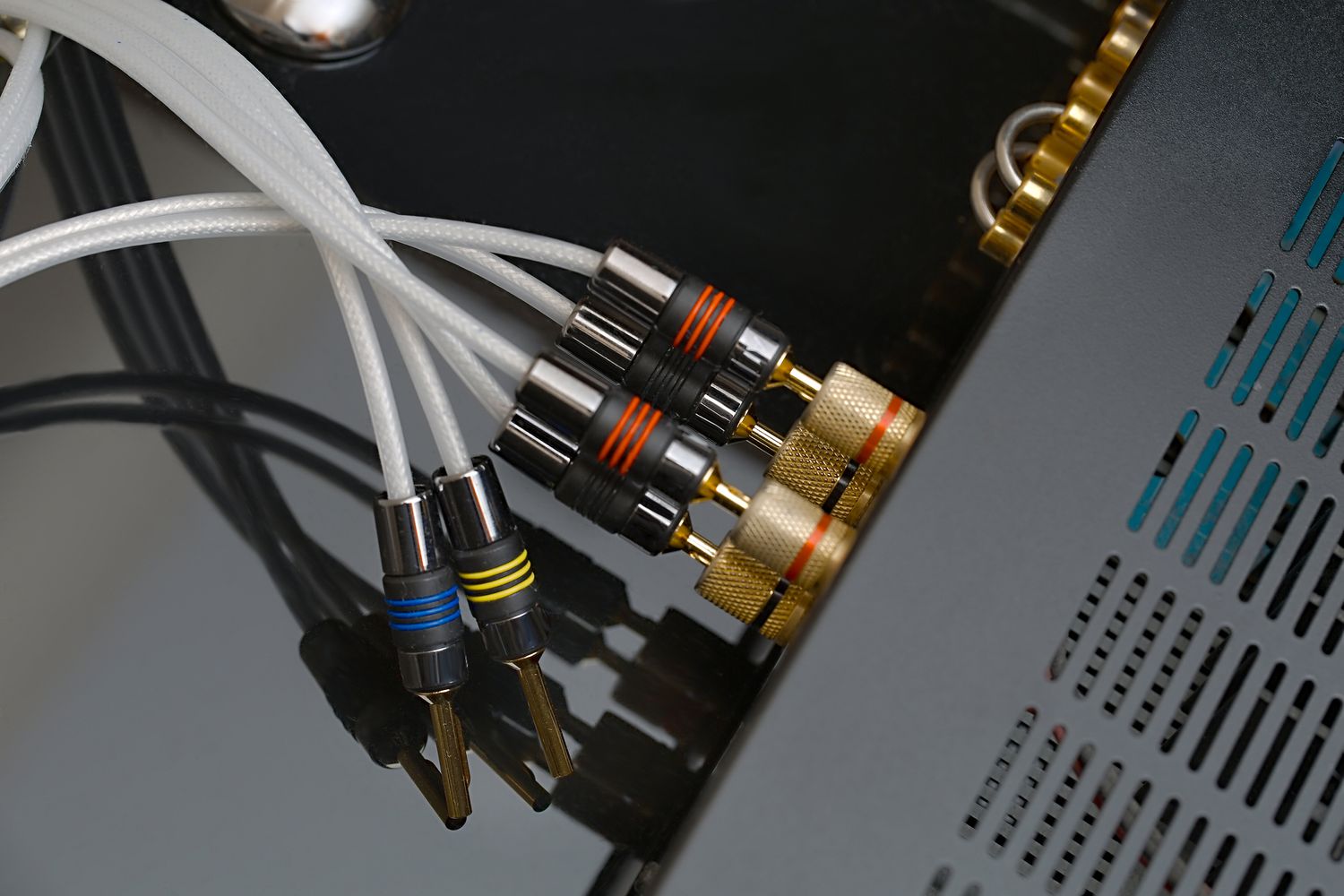Home>Production & Technology>Audio Cable>How To Use Volume Control On Virtual Audio Cable


Audio Cable
How To Use Volume Control On Virtual Audio Cable
Modified: January 22, 2024
Learn how to use volume control on virtual audio cable. Adjust the audio levels seamlessly with this easy-to-follow tutorial.
(Many of the links in this article redirect to a specific reviewed product. Your purchase of these products through affiliate links helps to generate commission for AudioLover.com, at no extra cost. Learn more)
Table of Contents
Introduction
Welcome to the world of audio cables! Whether you are a music enthusiast, a gamer, or a content creator, having a reliable and high-quality audio setup is essential for an immersive experience. In the realm of audio cables, there is one tool that stands out – Virtual Audio Cable.
Virtual Audio Cable, often referred to as VAC, is a software application that allows you to transfer audio streams between different applications or devices on your computer. It creates a virtual audio cable, acting as a bridge for audio to pass through, enabling you to manipulate and control the audio flow.
With VAC, you can route audio from one application to another, mix multiple audio sources, record audio streams, or even apply real-time effects to enhance the audio output. One of the key features of Virtual Audio Cable is its ability to provide precise control over the volume of each audio stream.
In this article, we will delve deeper into the world of Virtual Audio Cable and explore how to effectively use volume control to optimize your audio experience. Whether you want to adjust the volume of game sounds, music, or different audio input sources, we have got you covered. So, let’s jump right in and discover the wonders of volume control with Virtual Audio Cable!
What is Virtual Audio Cable?
Virtual Audio Cable, commonly known as VAC, is a software application that facilitates the transfer of audio streams between different applications and devices on your computer. It acts as a virtual cable, allowing audio to be routed and manipulated in real-time.
With Virtual Audio Cable, you can create virtual audio devices, often referred to as virtual cables or virtual audio channels. These virtual cables act as connectors, enabling you to send audio from one application or device to another. This opens up a world of possibilities for audio management and control.
The primary purpose of Virtual Audio Cable is to provide flexibility and versatility in audio routing. It allows you to control the flow of audio between various applications, ensuring that each audio stream is directed to the desired destination. This is especially useful in scenarios where you need to mix audio from different sources or record audio from specific applications.
Virtual Audio Cable also offers the ability to adjust the volume of each virtual audio channel. This means that you can fine-tune the audio levels of different applications or sources independently. Whether you want to boost the volume of a music player, normalize the audio levels of a video conference, or adjust the microphone input level, Virtual Audio Cable gives you the control to achieve optimal audio performance.
Furthermore, Virtual Audio Cable works seamlessly with most audio applications and devices on your computer. Whether you are using media players, video editors, recording software, broadcasting tools, or VoIP applications, you can integrate Virtual Audio Cable into your setup and take advantage of its powerful audio routing capabilities.
Overall, Virtual Audio Cable is a versatile tool that enhances your audio experience by allowing you to route and manipulate audio streams in real-time. With its ability to create virtual audio devices and control volume levels, Virtual Audio Cable provides the flexibility you need to achieve the desired audio setup for your specific needs.
Installing Virtual Audio Cable
Installing Virtual Audio Cable is a straightforward process that can be completed in a few simple steps. Here’s a step-by-step guide to help you install Virtual Audio Cable on your computer:
- Start by downloading the Virtual Audio Cable software from the official website. Make sure to download the appropriate version that is compatible with your operating system.
- Once the download is complete, locate the installation file and double-click on it to begin the installation process.
- Follow the on-screen instructions provided by the installer to proceed with the installation. You may be prompted to choose the installation location and agree to the terms and conditions of the software.
- After you have completed the installation, Virtual Audio Cable will be ready to use. However, it is recommended to restart your computer to ensure that the changes take effect.
Keep in mind that during the installation process, it is important to pay attention to any additional software or components that may be bundled with Virtual Audio Cable. Read through each screen carefully and uncheck any options that you do not wish to install.
Once the installation is complete, you can launch Virtual Audio Cable from your desktop or start menu. The software will run in the background, and you can access its settings and configuration options from the system tray icon.
It’s worth mentioning that Virtual Audio Cable offers a trial version, allowing you to explore its basic features before deciding to purchase the full version. However, the trial version may have limitations such as audio interruptions or a restricted number of virtual cables. To fully utilize the power of Virtual Audio Cable, it is recommended to upgrade to the paid version.
By following these simple steps, you can easily install Virtual Audio Cable on your computer and begin harnessing the capabilities of this powerful audio routing software. Once installed, you’ll be able to take advantage of its numerous features and enhance your audio setup in exciting new ways.
Configuring Virtual Audio Cable
Once you have installed Virtual Audio Cable on your computer, it’s time to configure the software to suit your specific audio needs. Configuration involves setting up virtual audio cables and adjusting various settings to ensure optimal audio routing and control. Here’s a step-by-step guide to help you configure Virtual Audio Cable:
- Launch Virtual Audio Cable by clicking on the system tray icon or accessing it from the start menu.
- In the Virtual Audio Cable control panel, you will see a list of virtual cables. Each virtual cable represents a separate audio channel. The default installation usually includes a few virtual cables, but you can add or remove them based on your requirements.
- To add a virtual cable, click on the “Add Cable” button in the control panel. You can assign it a name and specify the number of audio channels you want to create. This allows you to create separate audio streams for different purposes.
- To remove a virtual cable, select the desired cable from the list and click on the “Remove Cable” button.
- Next, you’ll need to configure the audio routing for each virtual cable. Right-click on a virtual cable and select “Properties” from the context menu.
- In the properties window, you can select the input and output devices for the selected virtual cable. Choose the appropriate audio sources from the available options. You can select applications, physical audio devices, or even other virtual cables as audio sources.
- Additionally, you can adjust other settings such as sample rate, buffer size, and control options. These settings may vary depending on your specific audio setup and requirements.
- Once you have configured the virtual cables and audio routing, click on the “OK” or “Apply” button to save the changes.
It’s important to note that the virtual cables and audio routing configurations can be customized to suit your unique audio setup. You can create complex audio pipelines, mix different audio sources, and route them to specific applications or devices. This level of flexibility allows you to design your audio workflow according to your preferences.
With Virtual Audio Cable configured, you can now take advantage of its powerful features, such as volume control, audio mixing, and real-time effects. Experiment with different settings and combinations to achieve the desired audio output for your specific needs.
By following these steps, you can easily configure Virtual Audio Cable and unleash its potential to enhance your audio experience. Whether you are a musician, gamer, content creator, or simply an audio enthusiast, Virtual Audio Cable provides the tools you need to take control of your audio setup and elevate it to new heights.
Setting Up Volume Control
One of the key features of Virtual Audio Cable is its ability to provide precise volume control over each virtual audio channel. With volume control, you can adjust the audio levels of different applications or sources independently, ensuring that each audio stream is at the desired volume. Here’s how you can set up volume control with Virtual Audio Cable:
- Launch Virtual Audio Cable and access the control panel.
- Select the virtual cable for which you want to set up volume control.
- Right-click on the selected virtual cable and choose “Volume Control” from the context menu.
- A volume control window will open, displaying sliders for each audio channel of the virtual cable.
- Drag the sliders to adjust the volume levels of the respective audio channels. You can increase or decrease the volume as needed.
- You can also mute or unmute specific audio channels by clicking on the speaker icon next to the slider.
- Repeat these steps for each virtual cable you want to set up volume control for.
By setting up volume control for each virtual audio channel, you gain precise control over the audio levels of different applications or sources. This allows you to achieve a balanced audio mix and prevent any audio sources from overpowering others.
In addition to the volume control within Virtual Audio Cable, you can also utilize the volume control options provided by your operating system or audio playback software. These additional controls can further fine-tune the audio output to match your preferences.
It’s important to note that volume control within Virtual Audio Cable is just one aspect of managing your audio setup. You can combine it with other features of the software, such as audio routing and mixing, to create a comprehensive audio workflow tailored to your specific needs.
With volume control properly set up in Virtual Audio Cable, you can achieve the perfect audio balance and enjoy an immersive audio experience across different applications, games, or any other audio sources you use.
Step-by-step Guide on Using Volume Control
Now that you have set up volume control with Virtual Audio Cable, it’s time to dive into using this feature effectively. With volume control, you can fine-tune the audio levels of different applications or sources independently, ensuring the perfect audio balance for your needs. Here’s a step-by-step guide on using volume control with Virtual Audio Cable:
- Launch Virtual Audio Cable and ensure that the virtual cables and volume control settings are properly configured.
- Open the application or source from which you want to adjust the volume. For example, if you want to adjust the volume of a media player, open the media player and play the desired audio.
- Switch to the virtual audio cable that is connected to the application or source. This can be done either within the application’s audio settings or by selecting the appropriate virtual cable as the audio output device in your operating system’s sound settings.
- Now, control the volume of the virtual cable using the volume control sliders within Virtual Audio Cable. Drag the sliders up or down to increase or decrease the volume levels of the specific audio channel.
- Observe the audio output and adjust the volume sliders until you achieve the desired audio balance. You can also mute or unmute specific channels if needed.
- Repeat these steps for each application or source connected to a virtual cable that you want to adjust the volume for.
- After you have fine-tuned the volume levels for each virtual cable, you can further adjust the overall volume using the system volume control or the volume controls in your audio playback software.
- Experiment with different volume settings and combinations to find the optimal audio balance that suits your preferences and enhances your audio experience.
By following this step-by-step guide, you can effectively use volume control with Virtual Audio Cable to adjust the audio levels of different applications or sources. The ability to control volume independently for each virtual cable provides you with the flexibility to fine-tune your audio setup and enjoy an immersive and balanced audio experience across various scenarios.
Remember, volume control is just one aspect of Virtual Audio Cable’s capabilities. Take advantage of other features, such as audio routing and mixing, to further enhance your audio setup and achieve the desired audio performance for your specific needs.
Troubleshooting Volume Control Issues
While using volume control with Virtual Audio Cable, you may encounter certain issues that can affect the audio output. Understanding and troubleshooting these issues will help you resolve them efficiently. Here are some common volume control issues and their potential solutions:
1. No audio or low volume: If you are not hearing any audio or the volume is too low, check the following:
- Ensure that the virtual cable is properly connected and selected as the audio output device in the application or source you are using.
- Make sure the volume control sliders in Virtual Audio Cable are set to an appropriate level for each channel.
- Check the system volume control and the volume controls within the audio playback software to ensure they are not muted or set to low levels.
- If you are using multiple virtual cables, confirm that the audio routing is configured correctly, and the audio is being sent to the desired virtual cable.
2. Overlapping audio or distorted sound: If the audio is distorted or overlapping, consider the following steps:
- Check if any applications or sources connected to a virtual cable are sending audio signals at excessively high volumes. Lower the volume in those applications to avoid audio distortion.
- Ensure that the audio levels of individual channels in Virtual Audio Cable are properly balanced. Adjust the volume control sliders to achieve a more even distribution of audio.
- Verify that the sample rate and buffer size settings are suitable for your audio setup. Adjusting these settings may help mitigate audio distortion issues.
3. Audio latency or delay: If you experience audio latency or delay, consider the following steps:
- Check the buffer size settings in Virtual Audio Cable. Increasing the buffer size may reduce audio latency but can introduce slightly delayed audio output.
- Ensure that your computer’s hardware specifications meet the requirements for real-time audio processing. Inadequate processing power or limited memory may cause audio latency issues.
- Closing unnecessary applications or processes running in the background can free up system resources and potentially reduce audio latency.
If you encounter any other issues with volume control or Virtual Audio Cable in general, the official documentation and community forums can provide valuable insights and troubleshooting tips. Additionally, updating to the latest version of the software and checking for any available patches or bug fixes may resolve compatibility issues or known bugs.
By following these troubleshooting tips, you can overcome volume control issues and ensure a smooth and optimal audio experience with Virtual Audio Cable.
Conclusion
Virtual Audio Cable is a versatile tool that enables you to take control of your audio setup and enhance your listening experience. With its powerful features, such as volume control, audio routing, and mixing capabilities, Virtual Audio Cable empowers you to create the perfect audio balance tailored to your preferences.
Through the step-by-step guide in this article, you have learned how to install Virtual Audio Cable, configure it, and set up volume control. You now have the necessary knowledge to fine-tune the audio levels of different applications or sources, achieving a well-balanced audio mix.
Remember to troubleshoot any volume control issues you may encounter, such as audio distortion or latency, by checking the virtual cable connections, adjusting volume sliders, and ensuring suitable buffer size settings. The official documentation and community forums are excellent resources for additional guidance.
Whether you are a music enthusiast, a gamer, or a content creator, Virtual Audio Cable empowers you to optimize your audio experience. From controlling the volume of game sounds to adjusting the audio levels of multiple sources during live streaming, Virtual Audio Cable can significantly enhance your audio setup and deliver a more immersive and enjoyable experience.
So, why settle for average audio quality when you can have complete control over your audio? Embrace Virtual Audio Cable, and unlock a world of possibilities for your sound system. Explore its features, experiment with different settings, and tailor your audio to perfection.
With Virtual Audio Cable, you have the power to create the ultimate audio environment for your digital activities. Get ready to elevate your audio experience and immerse yourself in crystal clear sound, exactly the way you want it.











